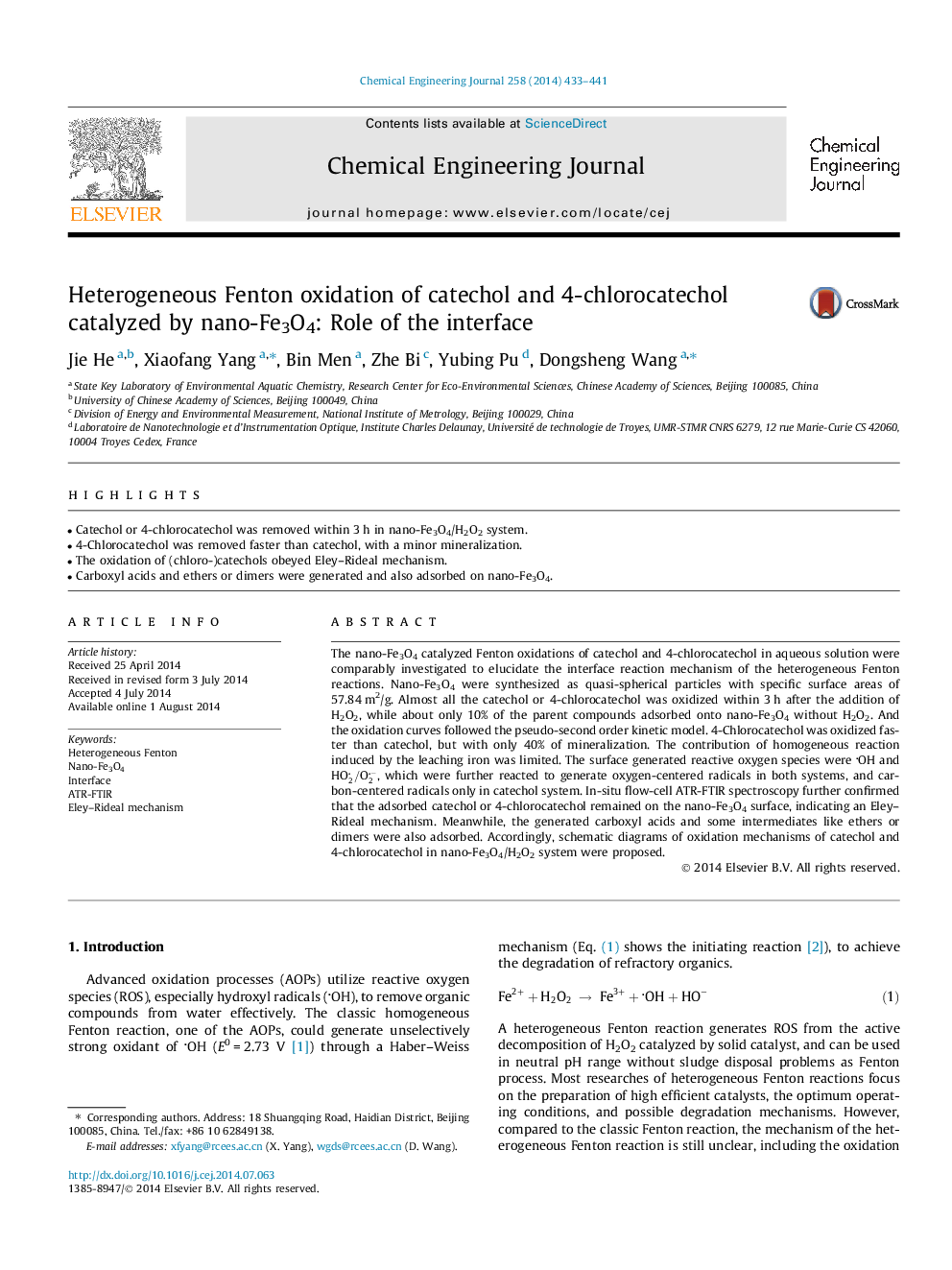| Article ID | Journal | Published Year | Pages | File Type |
|---|---|---|---|---|
| 146961 | Chemical Engineering Journal | 2014 | 9 Pages |
•Catechol or 4-chlorocatechol was removed within 3 h in nano-Fe3O4/H2O2 system.•4-Chlorocatechol was removed faster than catechol, with a minor mineralization.•The oxidation of (chloro-)catechols obeyed Eley–Rideal mechanism.•Carboxyl acids and ethers or dimers were generated and also adsorbed on nano-Fe3O4.
The nano-Fe3O4 catalyzed Fenton oxidations of catechol and 4-chlorocatechol in aqueous solution were comparably investigated to elucidate the interface reaction mechanism of the heterogeneous Fenton reactions. Nano-Fe3O4 were synthesized as quasi-spherical particles with specific surface areas of 57.84 m2/g. Almost all the catechol or 4-chlorocatechol was oxidized within 3 h after the addition of H2O2, while about only 10% of the parent compounds adsorbed onto nano-Fe3O4 without H2O2. And the oxidation curves followed the pseudo-second order kinetic model. 4-Chlorocatechol was oxidized faster than catechol, but with only 40% of mineralization. The contribution of homogeneous reaction induced by the leaching iron was limited. The surface generated reactive oxygen species were OH and HO2/O2-, which were further reacted to generate oxygen-centered radicals in both systems, and carbon-centered radicals only in catechol system. In-situ flow-cell ATR-FTIR spectroscopy further confirmed that the adsorbed catechol or 4-chlorocatechol remained on the nano-Fe3O4 surface, indicating an Eley–Rideal mechanism. Meanwhile, the generated carboxyl acids and some intermediates like ethers or dimers were also adsorbed. Accordingly, schematic diagrams of oxidation mechanisms of catechol and 4-chlorocatechol in nano-Fe3O4/H2O2 system were proposed.
